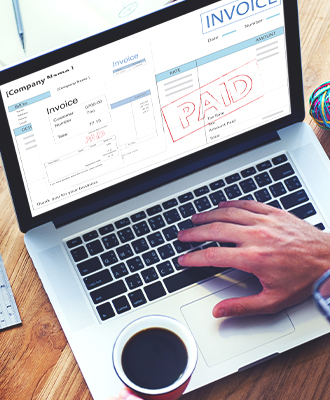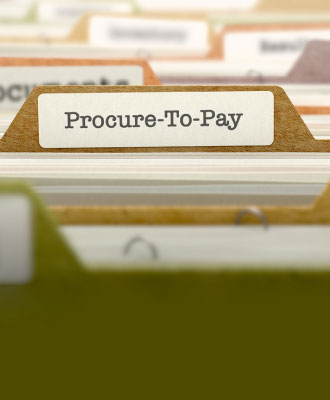Wrangling budgets and cutting costs are two less than thrilling but absolutely essential chores that come with optimizing your company’s financial health. Traditional budgeting methodologies are stable, static, and easy to set up and use, but in today’s dynamic global economy, they might not be sprightly enough to give your organization the vigor and adaptability you need to compete. One alternative many companies have come to embrace is Zero Based Budgeting, or ZBB.
This innovative approach provides some exciting opportunities to “wipe the slate clean” and take a new approach to budgeting—but it’s not for everyone. In order to determine whether the zero base method of budgeting is right for your business, you first need to understand its capabilities and limitations.
What is Zero Based Budgeting (ZBB)?
Unlike traditional budgeting approaches, which begin with drawing up a budget or forecast for the current year (often based on the previous year’s budget) and then adjusting it based on a variety of factors such as inflation, actual spend data, updated projections, etc., the zero based budgeting method wipes the slate clean every month and requires justification for every line item. In the zero based budgeting process, no line item is automatically transferred to the new budget from the previous month’s.
This budgeting method is forward-facing, rather than relying on historical budget data from last month, last quarter, or even last year. If traditional budgeting concerns itself with controls based on what’s being spent, zero-based budgeting concerns itself with why each expenditure is being made.
ZBB is more time-consuming and complex than traditional budgeting, but offers businesses a powerful cost reduction opportunity by reducing “budget bloat” and minimizing needless expense while prioritizing smart decision making and strategic allocation of resources. It is also extremely flexible, and can be applied to costs of all kinds: operating expenses, marketing costs, administrative expenses, cost of goods sold (COGS), etc.
With its emphasis on justified expenses and integration of spend with organizational goals, ZBB encourages project leaders and internal leadership alike to present clear, compelling explanations for their budgets and demonstrate how spend supports their mission and the overall growth, profitability, and competitive performance of the company as a whole.
Key Advantages and Disadvantages of Zero Based Budgeting
In considering whether or not to use the ZBB method, organizations need to consider the pros and cons that come along with it. It’s not a universal solution, and its capabilities may not be worth the attendant liabilities for organizations whose corporate culture, brand, or financial goals require a more traditional method of budgeting, (e.g. incremental budgeting).
Zero Based Budgeting Advantages
It’s Built on Cost-Benefit Analysis
When every line item has to be justified, it’s easier for some organizations to identify and eliminate the ones that aren’t generating adequate return on investment (ROI).
Keep in mind that this analysis can absolutely include more value-centric metrics such as total cost of ownership (TCO), social capital, and opportunities exclusive to the financial period covered by the budget, but must be contextualized inside of a larger budget in order to provide meaningful insights for these values.
In other words, zero based budgeting is monthly, but can provide data for deeper analysis in other financial models that incorporate data for the longer periods, such as the fiscal year, provided your organization makes such analyses part of its workflows.
It Prioritizes Resource Allocation Efficiency
Once a system is in place for ZBB, resources can be used with much greater efficiency because those expenses that return a healthy ROI (in profits, cost reduction, value generation, etc.) get the resources they need while less critical line items are moved down the list in priority or removed altogether rather than simply being automatically added to the next budget.
It Promotes Optimization in Business Process Management
Streamlining spend and focusing on those items that directly benefit your business through more value, cost reductions, greater efficiency, etc. helps “trim the fat” and supports continuous improvement over time. Streamlining workflows and controlling spend also helps with strategic decision-making, financial forecasting and cash flow management, and revealing opportunities to reassess priorities at the project, department, division, and corporate levels.
It Strengthens Strategic Growth and Transparency
With its emphasis on justified expenses and integration of spend with organizational goals, ZBB encourages project leaders and internal leadership alike to present clear, compelling explanations for their budgets and demonstrate how spend supports their mission and the overall growth, profitability, and competitive performance of the company as a whole.
In addition, ZBB promotes innovation and minimizes the waste and scope creep that can accompany baseline budgeting, where every dollar is often spent to protect the following year’s budget against cuts and encourage an increase—even when it’s not necessary.
Zero Based Budgeting Disadvantages
It Can Be Complex—and Expensive
Unlike traditional budgeting approaches, zero based budgeting can be very costly, as well as time-consuming and complicated, to implement. The extra training required (including using any new software, workflows, etc.), along with the fact that each budget is built from scratch rather than relying on the (quicker and easier) data from last year can add significant expense when making the change. For companies operating on thin budgets, the strain may prove prohibitive.
Time constraints, too, may be an issue, with financial teams working overtime (both figuratively and literally) to coordinate across business units to ensure all budgets are updated, accurate, and complete across the entire budgeting process.
It’s Linked to Tangibility
For departments whose deliverables aren’t quite as cut-and-dried as, say, procurement (where the procure-to-pay (P2P) process offers multifold opportunities to adjust workflows and spend for savings and value), prioritizing spend and, by extension, justifying it to stakeholders higher in the financial food chain can quickly become very challenging indeed.
It’s Disruptive
Making the change to ZBB can prove emotionally and intellectually taxing for some. Managers may find it difficult to make the switch to prioritizing and justifying every item in their budgets on a monthly basis, creating pushback that needs to be addressed before you can operate at peak efficiency.
A significant change to your budget process can also threaten to disrupt operations through potential changes driven by strategic decisions to change suppliers, or create additional risk exposure if you don’t have sufficient data to forecast measurable savings, value, or productivity improvements.
One area of disruption that might surprise you is the potential impact on your brand and reputation. Major changes in internal processes can have unintended impact on customer experience, particularly if cost-cutting (for example) leads to changes in materials or pricing that alter customer perception. In addition, shifting to a cost-benefit analysis model can make it difficult to provide “soft” value customers associate with a premium experience and brand, or make it harder to price goods and services at a premium (a major issue if your brand and reputation are built around such concepts).
Make a Smoother Leap to ZZB with Analytics and Automation
Rather than taking an “all or nothing” approach to zero based budgeting, many companies are finding success in applying it incrementally, where its context-sensitive and short-term benefits can make optimal use of data-driven insights to achieve cost reductions and create value.
One of the most reliable ways to make such an implementation a reality is by choosing to centralise data and spend management with a comprehensive, cloud-based solution like PurchaseControl.
Why? Intuitive tools for collecting, organizing, and analyzing all your spend data make it much easier to develop workflows and controls you can use to create accurate, transparent, and complete forecasts, budgets, and financial reports. Total spend transparency, guided buying, and robust modules for contract management, supply chain optimization, and strategic planning help you take advantage of opportunities in the short-term while simultaneously managing your long-term goals for growth, innovation, and competitive performance.
Automated workflows simplify repetitive, high-volume tasks and provide the data you need to spot opportunities to cut costs, improve efficiency, or create value. Plus, with fewer tedious, time-consuming, and low-level tasks on their plate, your financial team can dedicate their skills to strategic decision making and more proactive budget management through ZBB.
Best of all, investing in a software solution can help you avoid the potential disadvantages of implementing a zero based budgeting solution by reducing the time needed to bring your team up to speed, lowering the costs of restructuring your budgetary processes, and providing demonstrable value that can help set the stage for a larger, long-term digital transformation strategy.
Is Zero Based Budgeting the Right Fit for Your Business?
Private or public, large or small, every business has different budgetary needs. And if your company or organization is looking to make a shift toward ROI-focused, efficiency-minded budgeting techniques while still maintaining the flexibility to leverage opportunities and handle unexpected disruptions, incorporating zero based budgeting can help.
With the right tools and a commitment to securing buy-in from key stakeholders, ZBB can help you build results-oriented budgets that help you cut waste and bring your entire team on board to make smart, strategic spending decisions in the short-term budget cycle that benefit your company in the long term throughout proactive, intelligent financial management.
Take Control of Budgets, Optimize Your Spend, and Achieve Your Financial Goals with PurchaseControl
Find Out How








